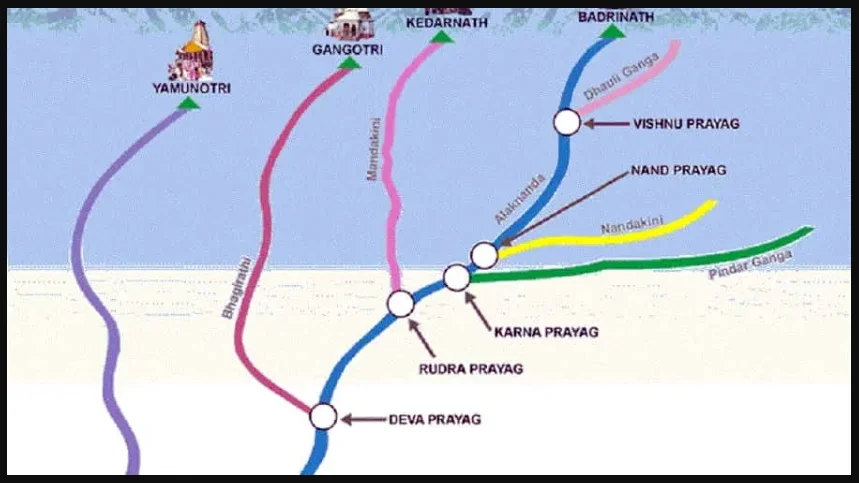Uttarakhand
Silt Levels Rise in Bhagirathi River
- 28 Nov 2025
- 2 min read
Why in News?
The Bhagirathi River in Uttarkashi (Uttarakhand) is witnessing dangerously high silt accumulation, with experts warning that the ban on dredging has increased flood risk and destabilised riverbanks, posing a threat to town infrastructure.
Key Points
- About:
- The National Green Tribunal (NGT) imposed a ban on dredging/excavation in the Bhagirathi in 2012, aimed at protecting the river’s ecological sensitivity as it falls under the Bhagirathi Eco-Sensitive Zone (ESZ).
- Officials now report that continuous silt deposition has raised the riverbed significantly, especially near the Uttarkashi district headquarters, reducing the river’s carrying capacity.
- The elevated riverbed increases the chances of flash floods, bank erosion, and overflow during monsoon, which may endanger homes, markets, and government buildings located close to the river.
- The State Government is preparing a proposal requesting the NGT to permit scientific desilting, similar to permissions granted in flood-prone rivers in other Himalayan states.
- About Bhagirathi River:
- The Bhagirathi is one of the two headstreams of the Ganga, originating from Gaumukh Glacier at Gangotri (Uttarakhand).
- It flows through Gangotri – Harsil – Uttarkashi – Tehri, meeting the Alaknanda at Devprayag, where they together form the Ganga.
- The stretch from Gaumukh to Uttarkashi is notified as the Bhagirathi Eco-Sensitive Zone (2012) to protect fragile Himalayan ecology and regulate hydropower, mining, and construction.
- Known for steep gradients, high sediment load, and vulnerability to landslides, cloudbursts and glacial melt—making riverbed elevation a significant hazard.








